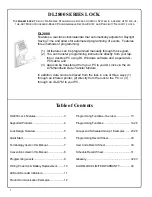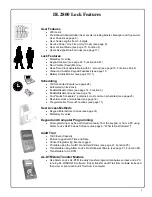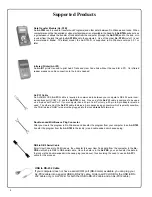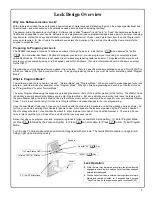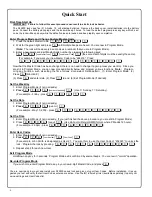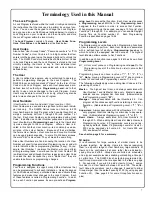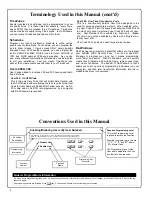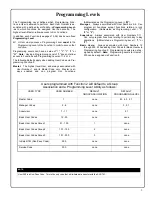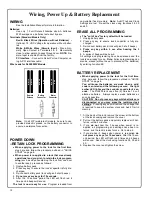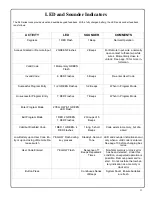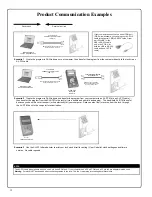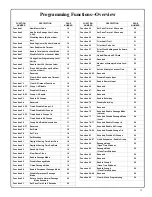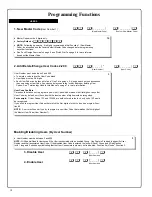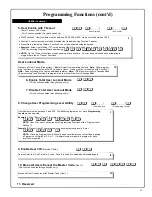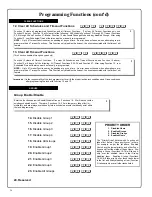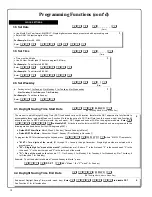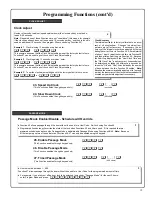
5
Lock Design Overview
Why Use Software inside a Lock?
With ordinary door locks, the need to make physical copies of metal keys and distributing them can be a huge organizational and
financial task -- and what will you do if someone causes a security breach by losing their key?
The answer lies in the advantage of
software
. Software (also called "firmware") is not "hard" or "fixed" like hardware--software is
flexible and changeable to your needs. Software can be programmed (and re-programmed again and again) to suit your changing
requirements. Rather than copy and distribute metal keys, distribute
User Codes --
and delete them from the
Lock Program
soft-
ware when required. (A
User Code
is the software equivalent of a metal key--it is a series of numbers the User enters into the
keypad to unlock the lock).
Preparing to Program your Lock
The DL2800 lock keypad contains 12 buttons, numbers 1 through 9 plus zero, a star button (
:
) and a special "AL" button
(
;
). You can either use these 12 buttons to program your lock--or--you can program your lock using a computer program
called
DL-Windows
. DL-Windows is not needed--but it makes programming faster and easier. This guide will show you how to
program your lock manually (using only the keypad), without DL-Windows. (For more information about DL-Windows, see User
Guide OI237).
Programming your lock begins after you unpack it from the box -- there is a specific procedure outlined on page 6 ("Quick Start") in
which you "wake up" the lock to prepare it for use. To begin programming the lock, you must first enter something called "Program
Mode".
What is Program Mode?
The software inside the lock has two "modes": "Normal Mode" and "Program Mode". When you want to make changes to the lock
program (add User Codes for example), enter "Program Mode". When you finish programming and wish to put the lock into use,
exit "Program Mode" to enter "Normal Mode".
You enter Program Mode using the keypad--by pressing the
Master Code
of the lock that was set at the factory. The Master Code
is basically a secret passcode that allows you to enter Program Mode. But since all locks are identical and leave the factory with
the same Master Code, the factory Master Code is therefore not very secret--and
should
be changed to your own personal Master
Code. This is to ensure that only YOU can enter Program Mode and make changes to the lock programming.
Once the new Master Code is set , then you can continue with the
Quick Start
procedure and set the weekday, date and time. Af-
ter this, you can start entering User Codes for people to use. All changes to the lock are organized by their "Function Number".
Want to change the date? Use Function Number 38. Want to add a User Code? Use Function Number 2. There are 99 Func-
tions in total, some that you will use often, and others that you may never need.
Notice that when you program your lock, programming tends to follow a
consistent 5-step pattern: (1) Enter Program Mode
(2) Press
;
followed by the Function Number (3) Press
;
and enter data (4) Press
:
to end (5) Exit Program
Mode.
Turn to page 7 and learn about the special terminology used with your lock. The Quick Start procedure (on page 6) will
help you get up and running quickly.
Lock Operation
•
While the lever may be rotated at any time, the latch will not be
engaged to unlock the lock unless a valid User Code has been
entered into the keypad.
•
When a valid User Code is entered, the lock will unlock imme-
diately and remain unlocked for 5 seconds (this 5 second
"Pass Time" can be changed--see page 20, functions 51-53).
PC / AL-DTM Interface
Tri
-Color Status LED
Infrared LED (for Printer)
Lever
Keypad
Special "AL" (
;
) Key
"STAR" (
:
) Key
Summary of Contents for Trilogy DL2800
Page 34: ...34 NOTES ...
Page 35: ...35 NOTES ...


